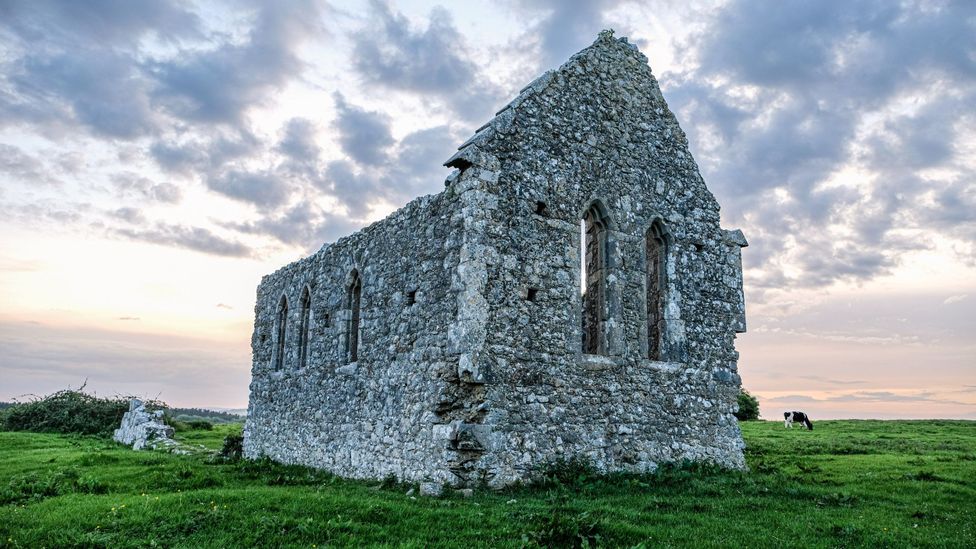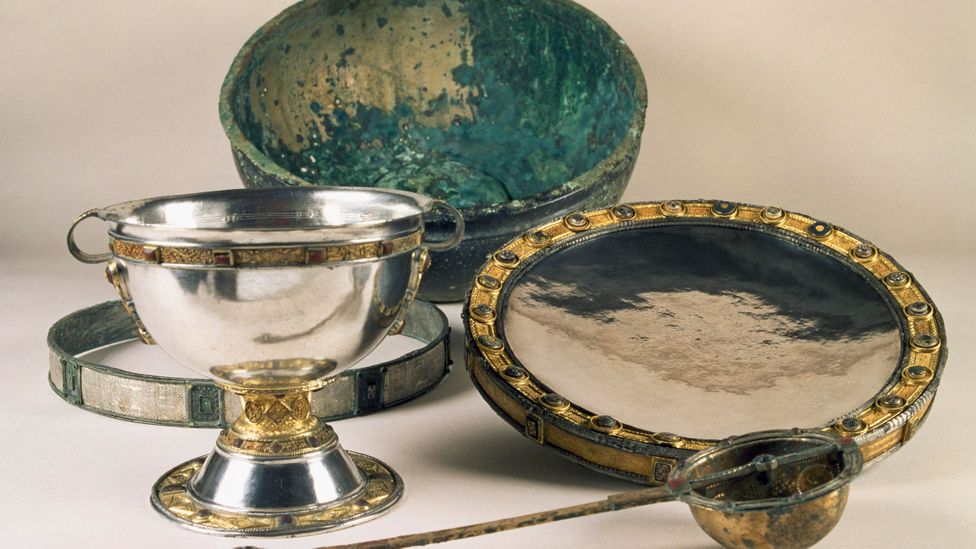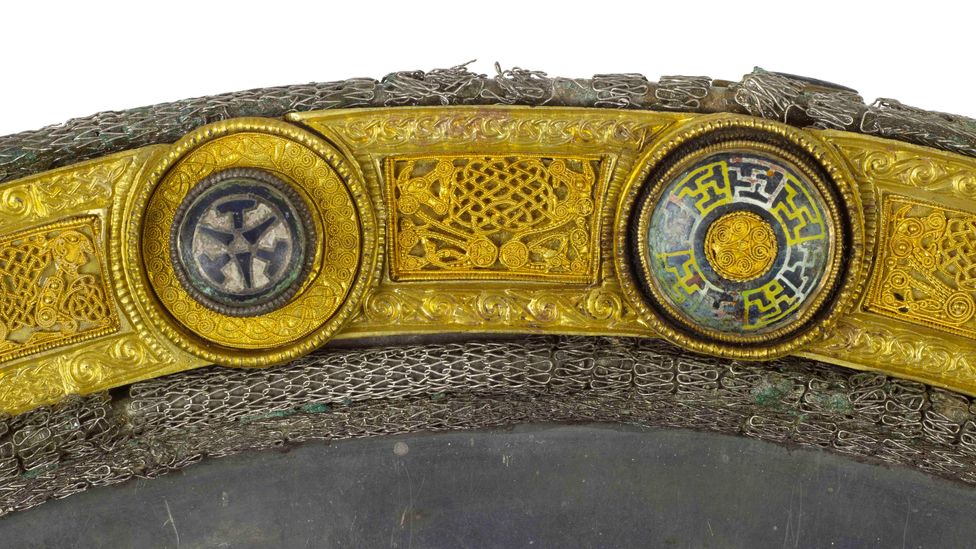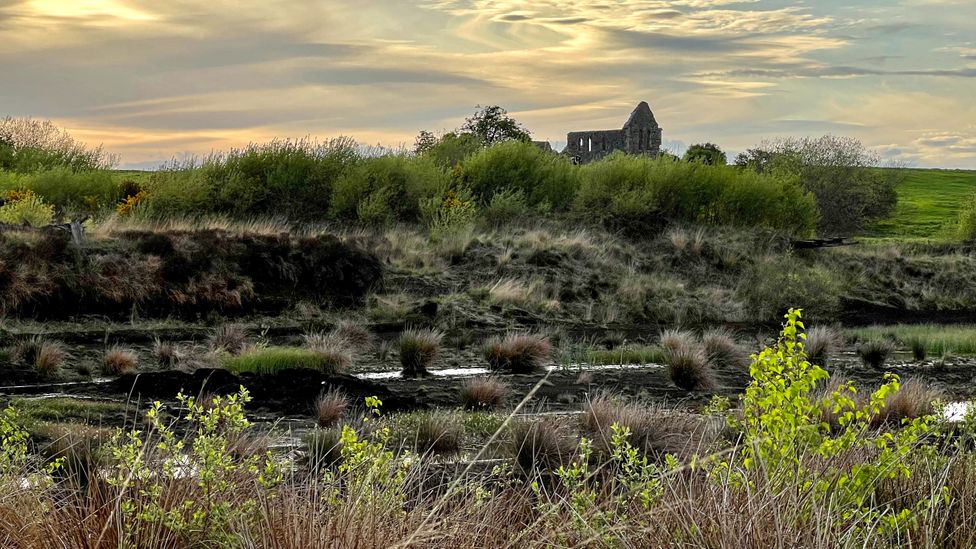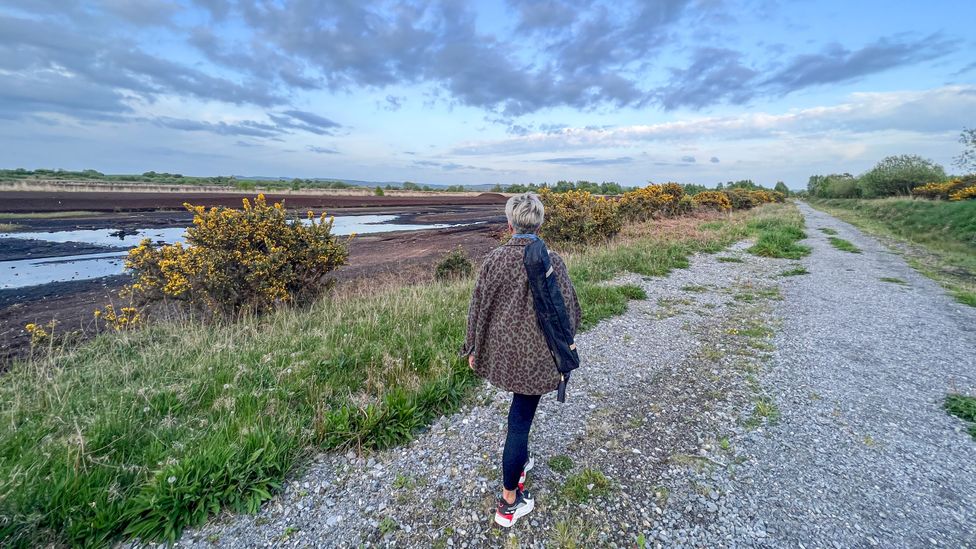One of the most exciting archaeological finds in the history of Irish art was unearthed on Tipperary's Derrynaflan Island by a man and his son using metal detectors.
"Go up there and dip your finger in the holy water – it's always full," insisted the farmer on the way to Derrynaflan Island. I was lucky to bump into him as there was no sign to direct me along a stony track to this sacred spot, mostly known only to locals.
Derrynaflan is not a typical island. This tiny 44-acre, privately owned mound, in Ireland's biggest inland county, isn't surrounded by an ocean or a lake. Unusually, it pops from the Bog of Lurgoe in Tipperary's vast brown swampy peatlands like a vibrant green mirage. Nevertheless, by dictionary standards, an island it categorically is.
I'd come to this remote bogland to see where Ireland's earliest hermetic monks found solitude from the 6th Century. While most of Europe was reeling in the post-Roman disarray of the Dark Ages, the land of saints and scholars (as Ireland widely became known) bucked the trend by entering a remarkable golden age of scholasticism and artistic achievement, characterised by monastic settlements like Derrynaflan.
But what's especially interesting about Derrynaflan is the priceless buried treasure likely left here by the monks. Discovered just a few decades ago, it changed Irish law and turned out to be one of the most exciting archaeological finds in the history of Irish art.
Careful not to disturb the munching bullocks, I gently climbed a short 200m to the ethereal ruins that still crown the island today. At the top, I wandered into what was left of a 12th-Century abbey that replaced an earlier monastery. A soft apricot evening glow poured through pane-less windows on to a long-departed altar. Two stumpy stone vessels were all that remained. One – a medieval bullaun (bowl) stone – was indeed hollowed enough to collect the farmer's promised "holy" (rain) water. I agnostically blessed myself as instructed.
An information sign at the abbey revealed there's much more to Derrynaflan than first meets the ecclesiastical eye. Controversially, the little-known mystical landmass shot to international archaeology fame in 1980 when a father and son from the town of Clonmel, about 25km away, unearthed an intricately decorated cup and plate using hobby metal detectors.
The "cup" was, in fact, a 9th-Century chalice. And the "plate", an 8th-Century paten used for holding the bread during the eucharist of Ireland's medieval church, confirmed Nessa O'Connor, curator and archaeologist at the National Museum of Ireland. "They are elite objects with a very, very high standard of craftmanship created at the highpoint in the early Irish church," she said.
The silver chalice and paten are decorated with outstanding examples of ancient Celtic goldsmithing, O'Connor explained. Fine interlaced gold-wire work called "filigree", illustrated on postage stamp-sized intricate art scenes around the edge of the paten, is in a style distinctive to Ireland. The paten is also the only example of its type to survive from early medieval Western Europe.
A wine strainer and stand (for the paten) completed a priceless hoard of Insular Art (shared art style in Ireland and Britain around 600 to 900 CE, heavily influenced by the expansion of the Irish monastic tradition). "The combination of the objects is unique… it's a complete altar set," O'Connor said, explaining that burying valuables was common during Viking raids and the dynastic turmoil of the 10th to 12th Centuries. "It looks like it was deposited deliberately [by the monks] at a time of high risk." Archaeologists have since meticulously surveyed the island and nothing else was found, she added.
Today, the Derrynaflan Hoard can be admired at the National Museum of Ireland in Dublin, along with other exceptional finds from the Insular Art period, such as the Ardagh Chalice, found in 1868 by a young man digging up potatoes near Ardagh, County Limerick. O'Connor noted that its artistry and style is comparable to the elaborately illustrated Book of Kells, which is "Ireland's greatest cultural treasure", according to Trinity College Dublin, where it is on display.
The natural conditions of boglands have proved to be freakishly good at preserving ancient artefacts. The low temperature, lack of oxygen and high acidity of the soil mean even organic matter can survive for thousands of years. A 3,000-year-old keg of butter was pulled out of an Irish peat bog. Bodies more than 2,000 years old have been found with hair and nails intact. However, before any get-rich-quick treasure-hunting thoughts rush in, Ireland has among the most stringent laws in Europe around metal detecting and excavation – and it was the Derrynaflan treasure discovery that tightened them, explained Sharon Greene, archaeologist and editor of Archaeology Magazine.
A seven-year legal battle between the Derrynaflan detectorists, the landowner and the government, which went all the way to the Supreme Court, eventually determined that the treasure hoard belonged to the state. "It means there isn't a legal hobbyist treasure-hunting scene in Ireland the way there is in other countries," Greene explained. In the UK, specialist tour operators arrange treasure-hunting trips. "This is never going to happen in Ireland," she said.
The wrangling over ownership and monetary value of the Derrynaflan treasure resulted in practically a blanket metal-detecting ban in Ireland. Penalties for both unlicensed searching and digging are harsh. And any archaeological objects found by accident (ploughing for example) automatically belong to the state. However, Greene continued, nowadays, archaeological interest is less about personal financial gain and more about pride of place and finding that special connection with your past.
In this spirit, I'd ambled to Derrynaflan following a newly waymarked 9km loop from the Horse and Jockey Hotel in the tiny townland of the same name. The first 2km was on twisty backroads, where I met with one car, which, judging from its speed, wasn't expecting to meet me. But soon enough, I crossed a bridge onto new stony pathways created by a group of passionate locals during the pandemic to make the perilous boglands more accessible. The island, which can be reached via an informal path, 200m or so off the main route, came into view after a couple of more kilometres.
Getting there
The 9km route, which passes close to Derrynaflan island, isn't clearly signposted yet. Landowner permission is needed to visit the island, so it's best to go with a local walking group or enquire at the Horse and Jockey Hotel.
Derrynaflan Island is also part of The Derrynaflan Trail, a self-guided driving tour that explores the sacred places of Tipperary's Slieveardagh Hills. The accompanying audio guide tells stories of saints, scholars, sinners, Norman warlords, Viking battles and powerful nobles through heritage sites spanning 15 centuries.
After decades of industrial peat-cutting to fuel Ireland's stoves, the bog was no longer nature's healthy blanket of saturated spongy moss it once was. But, several years since harvesting ended (due to green policies), it was encouraging to see flora gaining confidence over a largely drab landscape.
"Nature will take it back very quickly," said Eoin O’Connell, an agricultural science and biology teacher at a nearby secondary school whom I met en route. O'Connell often walks to Derrynaflan from his family farm in Lurgoe, a townland several kilometres away that the route passes through on the way back to the Horse and Jockey.
Grasses, heather and rows of gorse – a thorny shrub with bright yellow, vanilla-scented flowers – had taken root. Fingers of water, which will one day expand to become a flood plain, beckoned with soft reflections. "Slowly it will go from being a carbon releaser to a carbon sponge," O'Connell said. Wetland birds, now gathering in bigger numbers, pierced an eerie silence. "I've heard a cuckoo, he added. "That's rare."
Liam Fleming, another local who is interested in finding hidden heritage, started Tipperary community walking group Siul Eile (meaning "another walk") with a few people in 2016. It has since grown to 5,000 participants. Visitors can join regular walks (including the Derrynaflan Loop) free of charge. Fleming, who recently received a county honour for his sustainable social enterprise, said, "We take pride in looking after monuments and trails, but we also bring people together and share stories with each other."
The Irish countryside has one of the densest concentrations of surviving archaeological monuments in Western Europe. "There are other bog islands and ancient monastic sites peppered all over the place," said Greene, who believes heritage sites should be accessible to everybody. While the vast majority of Ireland's 150,000 or so recorded archaeological monuments are on private land (needing permission from the landowner to visit), communities are successfully accessing their local ancient sites, such as megalithic tombs, monasteries, castles, stone circles and battlefields, through the Heritage Council's Adopt a Monument programme.
Visitors will never be far from a community's special pride of place that links it to the past. Since many of these hidden nuggets are often beyond even Google's search prowess, Greene and Fleming both recommend relying on the more traditional way of "enquiring locally" about ancient sites of interest. This means "asking what the go is" at a hotel, a shop or a pub in the area.
In Killenaule, a small town about 9km from Derrynaflan, where you can still get your groceries and a pint of draught Guinness in the same store, people will happily tell you everything you need to know about their beloved treasure island and how you can get there. Expect the lowdown to be wrapped in legendary banter and generations of folklore. But that's another cherished story for locals to tell.
--
Join more than three million BBC Travel fans by liking us on Facebook, or follow us on Twitter and Instagram.
If you liked this story, sign up for the weekly bbc.com features newsletter called "The Essential List". A handpicked selection of stories from BBC Future, Culture, Worklife and Travel, delivered to your inbox every Friday.
